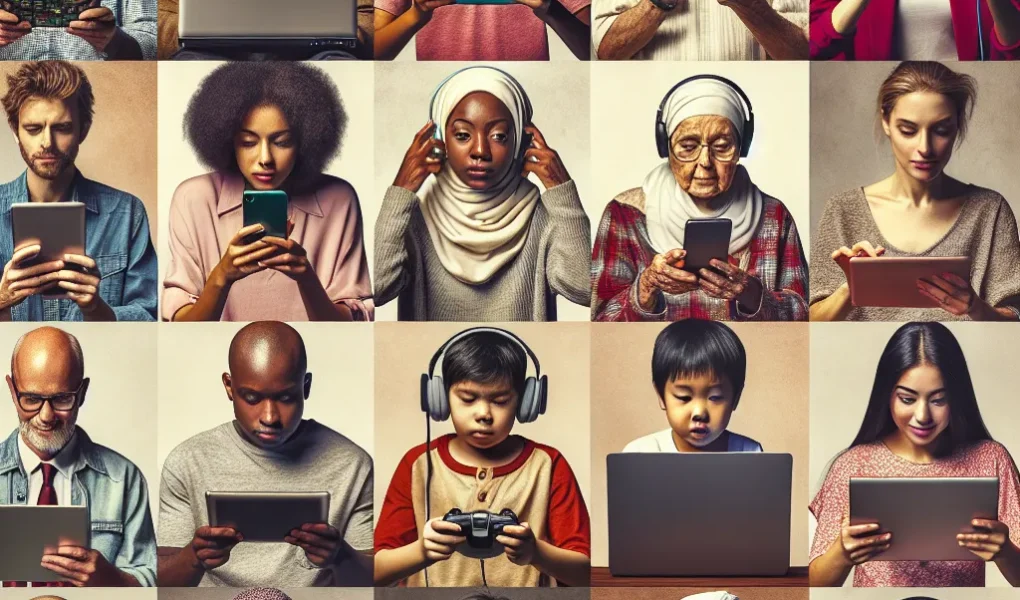The Rise of Streaming Services: A Threat to Traditional TV Watching Habits?
With the rise of streaming services, traditional TV watching habits have been significantly impacted. The convenience and flexibility offered by platforms such as Netflix, Hulu, and Amazon Prime have led to a shift in the way people consume content. Instead of being tied to a fixed schedule dictated by traditional TV networks, viewers now have the freedom to choose what to watch and when to watch it.
This shift poses a significant threat to traditional TV watching habits. Streaming services offer a vast library of on-demand content, including exclusive shows and movies, making them increasingly appealing to consumers. This has resulted in a decline in viewership for traditional TV channels, as more and more individuals opt for the convenience of streaming.
Additionally, streaming services often provide ad-free viewing experiences, which further distinguishes them from traditional TV. This has raised concerns for advertisers who now have to adapt their strategies to reach audiences who are no longer reliant on traditional TV commercials.
As the popularity of streaming continues to grow, it is evident that traditional TV watching habits are being challenged. The emergence of new streaming platforms and the trend towards cord-cutting indicate a shift that is reshaping the entertainment industry as we know it.
Changing Consumer Behavior: The Influence of Streaming on TV Viewing
One of the most noticeable impacts of the rise of streaming services is the changing behavior of TV viewers. The convenience and flexibility offered by streaming platforms have significantly influenced consumer habits, leading to a shift away from traditional TV watching. With the ability to access a wide range of content anytime and anywhere, viewers are increasingly turning to streaming as their preferred mode of entertainment consumption.
Consumers now have the freedom to choose what they want to watch and when they want to watch it, thanks to the on-demand nature of streaming services. This shift in behavior has led to a decline in traditional TV viewership, as viewers opt for the personalized and tailored experience offered by streaming platforms. The availability of exclusive content and original productions on streaming services further entices consumers to shift away from traditional TV viewing.
Moreover, the influence of streaming on TV viewing habits is evident in the rise of binge-watching culture, where viewers consume multiple episodes of a series in one sitting. This trend has fundamentally altered the way audiences engage with content, as they immerse themselves in an uninterrupted viewing experience enabled by streaming services.
As a result, advertisers and content providers are adapting to this shift in consumer behavior by investing in targeted advertising and engaging with viewers through digital platforms. The impact of streaming on traditional TV watching habits is undeniable, marking a significant transformation in the way audiences consume entertainment content.
Adapting to Digital: How Traditional TV is Responding to the Impact of Streaming
In the era of digital streaming, traditional TV is facing a significant shift in viewer habits. The impact of streaming on traditional TV watching habits has prompted a swift response from the television industry. Adapting to the digital landscape, traditional TV networks and cable providers are implementing strategic measures to retain their viewership. One of the key responses has been the development of their own streaming platforms, offering on-demand access to their content. By embracing digital streaming, traditional TV is striving to cater to the changing preferences of consumers who seek flexibility and convenience in their viewing experience.
The Evolution of TV Habits: Exploring the Effects of Streaming on Viewership
The evolution of TV habits has been significantly influenced by the rise of streaming services, such as Netflix, Hulu, and Amazon Prime. These platforms have provided viewers with a plethora of on-demand content, allowing them to move away from traditional TV schedules and embrace a more personalized and flexible viewing experience. As a result, the effects of streaming on viewership have been profound, leading to a shift in how people consume television content.
One of the key impacts of streaming on traditional TV watching habits is the decline in live TV viewership. With the convenience of streaming, viewers are no longer tied to specific broadcast times, and they can choose to watch their favorite shows at their own convenience. This has led to a decrease in audience numbers for traditional TV broadcasts, as more viewers opt for streaming services to tailor their viewing schedule to their lifestyle.
Furthermore, the availability of entire seasons of TV shows on streaming platforms has also led to binge-watching becoming a prevalent behavior among audiences. Instead of waiting for a new episode each week, viewers can now consume an entire series in one sitting. This shift in viewing behavior has altered the dynamics of audience engagement and has prompted content creators to reconsider their storytelling techniques to cater to binge-watching tendencies.
In addition, the accessibility of streaming services on multiple devices has contributed to a more personalized viewing experience. Viewers can seamlessly switch between watching on their TVs, laptops, tablets, or smartphones, providing them with the flexibility to consume content wherever and whenever they desire. This flexibility has redefined the concept of appointment viewing, as viewers are no longer confined to a specific location or device to engage with TV content.
In conclusion, the effects of streaming on viewership have reshaped traditional TV watching habits by offering a more personalized, flexible, and on-demand viewing experience. As streaming continues to evolve, it is expected to further influence how audiences engage with television content, ultimately shaping the future of TV habits.
Streaming vs. Traditional TV: Analyzing the Shifting Trends in Entertainment Consumption
In recent years, the entertainment industry has witnessed a significant shift in consumer habits, particularly in terms of how people choose to access and engage with television content. The rise of streaming services has revolutionized the way individuals consume entertainment, presenting a formidable challenge to traditional TV watching habits. The convenience, flexibility, and extensive content libraries offered by streaming platforms have drawn a substantial portion of viewers away from conventional television. This shift is indicative of the changing trends in entertainment consumption, with streaming rapidly gaining traction as the preferred choice for many consumers.
Streaming services such as Netflix, Amazon Prime Video, and Hulu have redefined the entertainment landscape, enabling viewers to access a diverse range of content anytime, anywhere. The on-demand nature of streaming allows individuals to customize their viewing experience, binge-watch entire series, and access exclusive original programming. Furthermore, the personalized recommendations and user-friendly interfaces of these platforms contribute to an engaging and immersive entertainment environment.
In contrast, traditional TV providers are grappling with declining viewership and struggling to adapt to the evolving preferences of audiences. Advertisements, fixed scheduling, and limited content options are among the factors that have contributed to the waning appeal of traditional television. As a result, many consumers are increasingly favoring the freedom and control afforded by streaming platforms, leading to a notable impact on traditional TV watching habits.
As the dynamics of entertainment consumption continue to evolve, it is evident that the competition between streaming and traditional TV is intensifying. While both avenues offer distinct advantages, the convenience, on-demand accessibility, and diverse content offerings of streaming services have positioned them as formidable contenders in the modern entertainment landscape. As such, analyzing the shifting trends in entertainment consumption becomes crucial in understanding the enduring impact of streaming on traditional TV watching habits.



